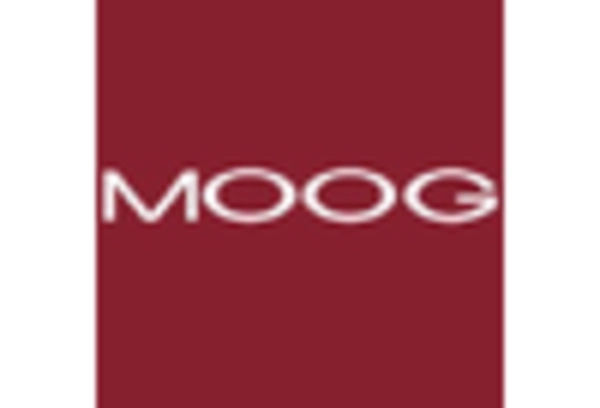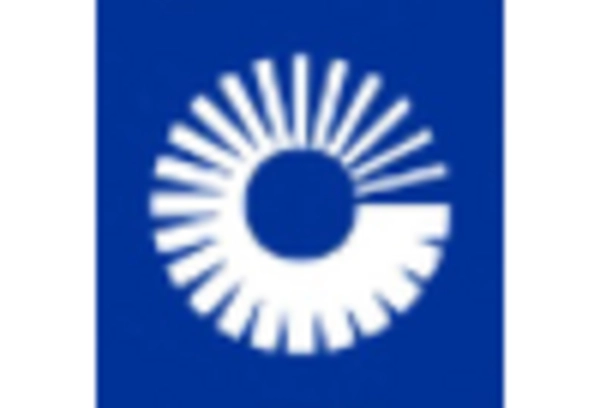- Q2 2024: Safran signs major contract with Airbus for next-generation aircraft seat actuation systems Safran announced a multi-year contract with Airbus to supply advanced seat actuation systems for the A320neo and A350 programs, aiming to enhance passenger comfort and cabin efficiency.
- Q2 2024: Collins Aerospace opens new manufacturing facility for aircraft seat actuation components in Singapore Collins Aerospace inaugurated a new production facility in Singapore dedicated to manufacturing precision seat actuation components for commercial aircraft, expanding its global supply chain capabilities.
- Q3 2024: Rolls-Royce acquires minority stake in seat actuation startup Actuaero Rolls-Royce announced the acquisition of a 20% stake in Actuaero, a UK-based startup specializing in lightweight electric seat actuation systems for commercial aviation.
- Q3 2024: Recaro Aircraft Seating secures contract with Emirates for business class seat actuation upgrade Recaro Aircraft Seating won a contract to retrofit Emirates' business class cabins with new seat actuation systems, focusing on improved reliability and passenger customization.
- Q4 2024: Meggitt launches next-generation modular seat actuation platform for commercial jets Meggitt introduced a new modular seat actuation platform designed for rapid integration into multiple aircraft types, offering enhanced maintainability and reduced weight.
- Q4 2024: Aerospace supplier Bühler Motor announces partnership with Boeing for electric seat actuation systems Bühler Motor entered into a strategic partnership with Boeing to co-develop electric seat actuation systems for future commercial aircraft, targeting improved energy efficiency.
- Q1 2025: Parker Hannifin wins contract to supply seat actuation systems for United Airlines’ new fleet Parker Hannifin was awarded a contract to provide advanced seat actuation systems for United Airlines’ upcoming fleet of Boeing 787 and Airbus A321XLR aircraft.
- Q1 2025: Faurecia announces executive appointment to lead aircraft seat actuation division Faurecia named Dr. Marie Dubois as the new head of its aircraft seat actuation division, signaling a renewed focus on innovation and global expansion.
- Q2 2025: ITT Inc. unveils smart seat actuation system with predictive maintenance for commercial aviation ITT Inc. launched a new smart seat actuation system featuring integrated sensors and predictive maintenance capabilities, aiming to reduce downtime for airline operators.
- Q2 2025: Diehl Aviation secures regulatory approval for new lightweight seat actuation technology Diehl Aviation received EASA certification for its latest lightweight seat actuation technology, enabling airlines to reduce cabin weight and improve fuel efficiency.
- Q3 2025: Moog Inc. announces partnership with Embraer for next-gen seat actuation integration Moog Inc. entered a partnership with Embraer to integrate its next-generation seat actuation systems into the E2 series, focusing on enhanced passenger comfort and system reliability.
- Q3 2025: Geven S.p.A. raises €40 million to expand aircraft seat actuation R&D Geven S.p.A., an Italian aircraft seating manufacturer, completed a €40 million funding round to accelerate research and development of advanced seat actuation technologies for commercial aircraft.
Research Methodology
The market values and forecast are derived using the Market Research Future (MRFR) research methodology, which includes secondary research, primary interviews, data triangulation, and validation from an in-house data repository and statistical modeling tools.
Secondary Research
in this process, data is collected from various secondary sources, including annual reports, SEC filings, journals, government associations, aerospace & defense magazines, white papers, corporate presentations, company websites, and paid databases.
Primary Research
In this process, both the demand- and supply-side parties are interviewed to extract facts and insights into the market forecast, production, trends, and projected market growth. Industry stakeholders such as CEOs, VPs, directors, and marketing executives across the value chain are approached to obtain key information.
Key Insights
Market Sizing, Forecast, and Analysis: Detailed coverage of the market segment and sub-segments
Regional/Country Trends and Forecast: Detailed analysis of the market in North America, Europe, Asia-Pacific, Middle East & Africa, and Latin America, along with key countries in each region
Market Dynamics Intelligence: Market drivers, opportunities, trends, restraints, Porter’s five forces, supply chain, and value chain analysis
Technology Trends, Regulatory Landscape, and Patent Analysis Outlook
Competitive Intelligence: Market share analysis, financial analysis, product benchmarking, and strategic developments including joint ventures, product launches, and mergers & acquisitions
Regional attractiveness and related growth opportunities

















Leave a Comment